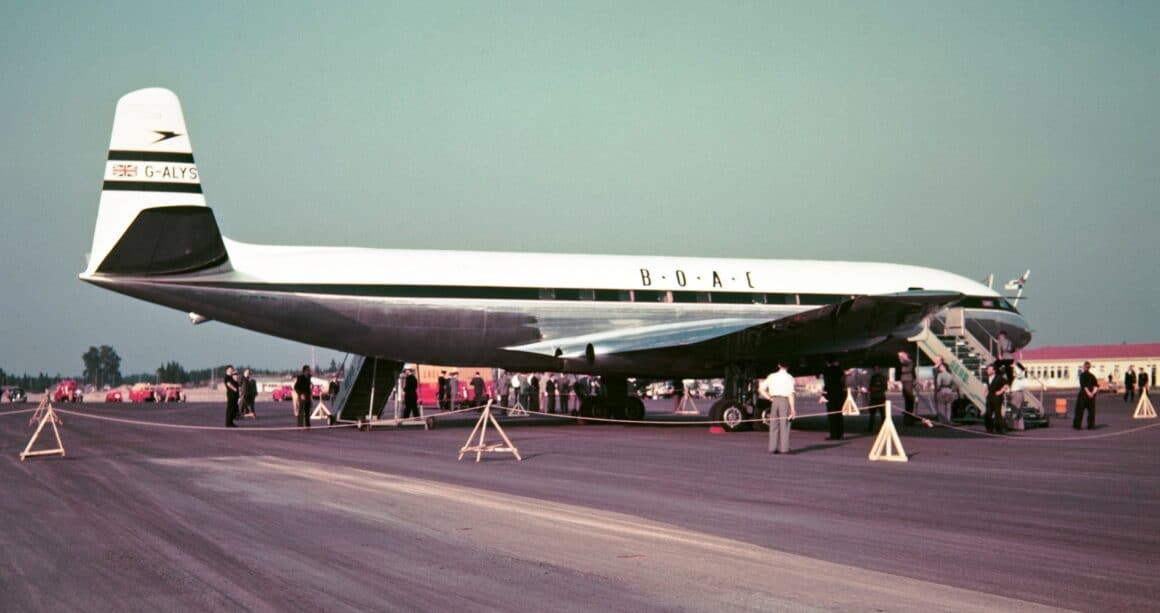The De Havilland Comet 4’s “First Flight” Ended Up Being Its Swan Song Too!
On 4 October 1958 British Overseas Airways Corporation (BOAC) operated the first transatlantic jet service with the de Havilland Comet 4. BOAC was also the first airline to offer jet passenger service across Europe and into Africa operating the de Havilland Comet 1. Within two years, all Comet aircraft were grounded due to a series of four crashes, later determined to be from metal fatigue caused by pressurization/depressurization cycles. The Comet had square windows, and the corners of the window openings created an area of weakness that resulted in structural failure of the aircraft in flight.
De Havilland worked through several versions of the Comet, and by the time of the first transatlantic flight to the North America, BOAC was flying the Comet 4, that had been designed to be fail-safe. The fuselage structure was designed so that a crack in the skin was limited to a very small area, and therefore would not be a catastrophic failure.

The Fate of the Comet 4 as a Passenger Airliner was Already Determined Even Before That First Transatlantic Flight
While BOAC could claim initiating transatlantic passenger jet service, before the end of the same month, Pan American Airways (Pan Am) was flying the same route with the new Boeing 707 and later with the Douglas DC-8. The American-built planes were larger, faster, had greater range, and carried more passengers. Even before their first transatlantic flight, BOAC had made the decision to purchase the Boeing 707. With that, the fate of the Comet 4 as a transatlantic aircraft was sealed.
